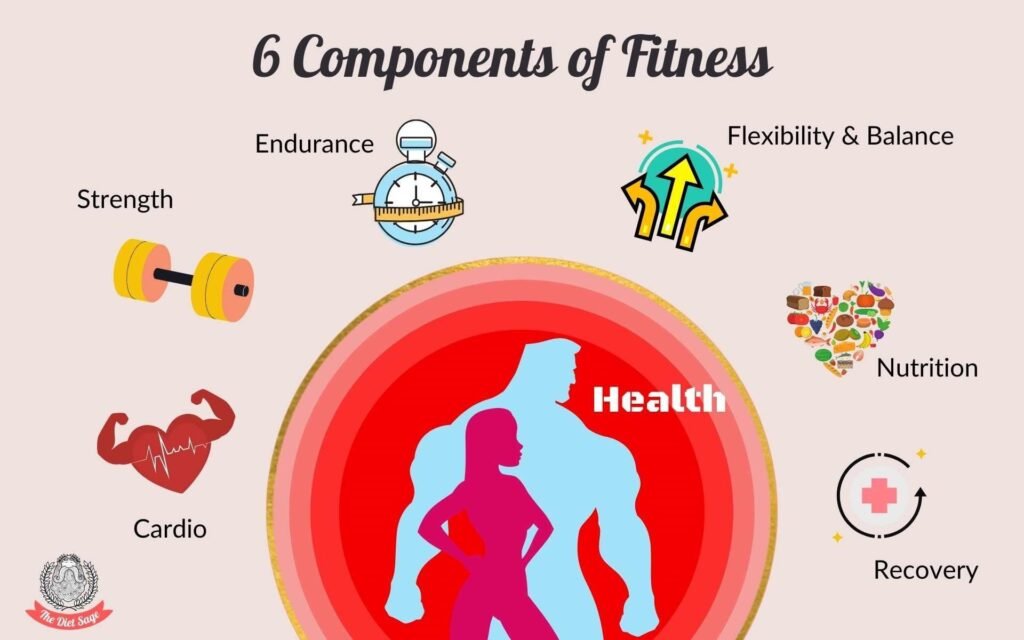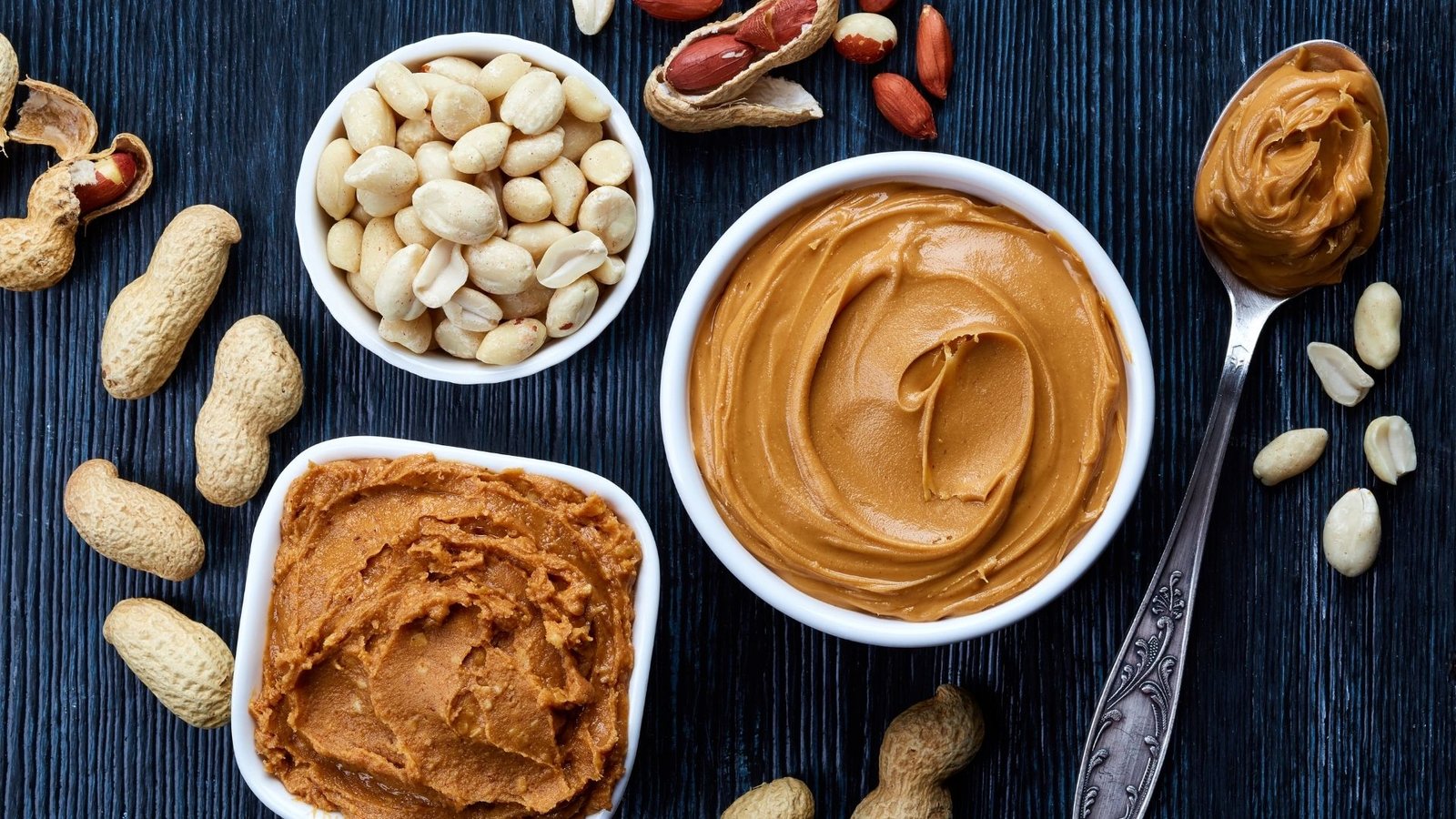6 Components of Fitness: Improving health and skills

“Are you feeling fit?” is a question that can elicit lots of different responses. To one person, it might mean the ability to jog for miles without losing breath or having to stop. Another may define fitness as being able to do 50 sit-ups or push-ups. What’s even more confusing is when people say they’re “working on their fitness.”
What does that even mean?
The truth is, there are many ways to work on your fitness and improve your health. For other people, this means joining an exercise class at the gym three times per week. At the same time, others may want to focus on eating better by cooking at home with fresh ingredients and avoiding processed foods.

No matter what you think the phrase means, it’s good for everyone to be as healthy as possible, and fitness certainly provides us with many tools to do so.
Fitness is a Spectrum
Fitness is a spectrum. It means that everyone is at different points, and there are many ways to get there. Everyone has individual needs with any health and wellness issue, soa one-size-fits-all approach to fitness doesn’t work.
General health tips, like “eat well and exercise,” aren’t what people need to hear. They need information on how they specifically can meet their fitness goals.

Self-discovery is a critical first step to being fit. However, it can be difficult because many components need to be balanced to get your desired results. For this, you need to understand these components first.
So, without further ado, let’s dive in…
Types of Fitness
There are 2 types of fitnesses:
1- Health-related Fitness
2-Skill-related fitness

Let’s discuss them in detail.
Health-Related Fitness
Health-related or physical fitness means doing physical activities to enhance overall health and well-being.
Physical fitness is defined as “a personal relationship between the body and mind. In which both are open to and accept the effects of physical activity on the physiological, psychological and social state of being healthy”.

Health-Related 6 Components of Fitness
To help those who are trying to improve their fitness level, here are 6 components of fitness. You should develop each one to achieve overall fitness and wellness. They are:
1-Cardio
2-Strength
3-Endurance
4-Flexibility and Balance
5-Nutrition
6-Recovery
Cardio
Cardio is the measure of how much oxygen your heart uses and how fast it can go without stopping.

Cardiovascular exercise increases the number of red blood cells in your body and transports them to where they are needed quickly. This allows oxygen to be delivered more efficiently throughout the body, including the muscles, during intense activities. Cardio exercises help the person build up their endurance and burn fat fast.
Exercises that boost Cardio are Running, Cycling, Swimming, Jogging, Rowing
Strength
Strength is the ability to move a weight against resistance. The strength exercises build muscle mass by stimulating the protein synthesis process in the body. The more muscle you have, the higher your metabolic rate will be, and you’ll burn more calories at rest.

Exercises that boost strength are Mile, Pacer, Rowing, Jogging, Swimming, Cycling, etc.
Endurance
Endurance is another important component of fitness. It is related to the ability to maintain activity over a long period. People can increase their endurance by doing things like jogging or running outside.

These exercises strengthen heart muscles, lungs, and other respiratory muscles to provide a continuous supply of oxygen to working muscles over long periods.
Exercises that build endurance are Bicep Curl, Bench Press, Squat, weightlifting, etc.
Balance and flexibility
Balance and flexibility are important for reaching your full range of motion. They need to be well maintained.

Balance is the quality of remaining upright and steady while doing an activity. Flexibility is how far you can stretch your muscles without injury. Yoga is good for improving flexibility.

Exercises that build balance and flexibility are yoga, squats, lunges, jogging in place.
Nutrition Fitness
Nutrition includes eating enough food to fuel your workouts effortlessly.

Nutritional fitness is related to the proper nutrition that allows for maintaining healthy body weight and preventing diseases.

It includes eating proper healthy meals which provide enough nutrients and avoiding unhealthy foods such as junk food, toxins like alcohol, tobacco, etc.
Recovery
Recovery consists of getting enough sleep or rest, so you have energy for your daily activities- all the while de-stressing with things like meditation or yoga.

Skill-Related Fitness
Skill-related fitness is about your ability to move your body and core through a variety of different positions on the playing field.

For example, there are hand and foot skills required for different sports. If you cannot perform these skills, then being able to outrun or out-jump somebody else will not matter.
You should be in good shape physically and mentally to perform well on the field or court. You need to be prepared for a rigorous workout to improve your skillset in sports activities.

Skills-Related 6 Components of Fitness
There are 6 different types of skills related fitness components:
1.Agility
2.Speed
3.Reaction time
4.Balance
5.Power
6.Coordination
Let’s have a look at them:
Agility
Agility is the body’s ability to rapidly and efficiently change directions. It is one of the most important techniques used by professional players today. Agility training throws your body into a state of shock as it readjusts quickly from one position to another.

Example: The agility component of fitness can be best illustrated by tennis, as players must move quickly to produce the desired outcome.
Speed
Speed plays an extremely vital role in sports performance. You need the speed if you are chasing down an opponent or trying to get past a defender.
You may also find yourself in a situation where you need to catch a ball with quick reflexes and precision. Speed training builds explosiveness off the line from a standing start so that you can cover ground faster.

Example: The speed component of fitness can be best illustrated by rugby league, as players must develop bursts of power over short distances.
Reaction time
Being able to react quickly and proportionally depends on how fit you are, both physically and mentally.
Reacting fast helps with field position and ultimately improves your reflexes so that the ball doesn’t slip through your fingers or feet at crucial moments.
You may have heard the old cliché about ‘the ball is a lot quicker than people think‘. Well, reaction time plays a vital role in reducing this gap between thinking and doing.

Good reactions require instant nerve responses and sound judgment. Having good reactions helps you make split-second decisions to your advantage faster than others.
Example: The reaction time component of fitness can be best illustrated by netball, as players need to react quickly and accurately to intercept a ball or goal shoot.
Balance
The ability to balance on two feet is a vital skill for every player who participates in sports.
Without the ability to have good balance, you will not be able to move around safely and effectively during a game or match, leading to severe injury or even lost opportunity.

You may be a very skilled player, but it is almost impossible for you to play at your full potential if you do not have a good balance. Using both hands and feet to distribute or receive the ball also depends on your ability to maintain balance.
Example: The balance component of fitness can be best illustrated by basketball, as players must keep their bodies stable when in motion and airborne.
Power
Power is an effort made to overcome resistance. It is a short burst of speed with strength behind it that can knock a player off-balance or over completely if it’s strong enough.
If you want to get past an opponent who has you covered, you will need lots of power behind your push so that nothing stands between you and the goal line but a favorable bounce from the ground or court surface.

Having good power helps conquer stronger opposition than yours by sheer force where accuracy does not matter as much.
Example: Rugby shows the power component of fitness. Players need physical strength and stamina to withstand the force generated when tackling and being tackled in this sport.
Coordination
Coordination is the smoothness and rhythm in movement or physical activity.
Moving your body properly while trying to catch or kick a ball requires good coordination skills.

It also helps to make decisions fast on court or field without hesitation because you have trained your brain to react instantly after mastering the right routine for what you do best in sports.
Example: The coordination component of fitness can be best illustrated by soccer, as players must use their feet and body as a coordinated unit to make plays in this sport.
Find What Works For You
There are many ways to work on your fitness and improve your health, so find what works for you.
Your unique abilities, preferences, interests, and needs will be different from another person’s. So, you might want to try a few things before settling on one activity that will work for you.

If you already have something you enjoy doing (or something that helps with a frustrating problem), there is no need to change. Just find ways to make time for it!
You may receive guidance on how to become fit from many sources, and you can use it with some confidence that the information is valid. The key is to compare several recommendations for fitness activities and assess which would be most enjoyable while helping you meet your current needs.
You might reach a “no preference” decision about activity after comparing it with others, or you might find someone’s suggestion fits well with your preferences (or what you already enjoy). You can then proceed confidently toward becoming more fit!
Finding the Right Balance of 6 Components of Fitness For You?
How can you find the right balance of 6 components of fitness of both sorts? for you? Well, you can use the following steps for a starting point:
Determine your fitness goals!
What are your fitness goals? If it’s just to lose weight or get fit but not necessarily be competitive in sports, more cardiovascular exercise might be a good start.

If your goal is to play competitive sports such as tennis or football (soccer), then more strength training would be appropriate at this time.
Assess what you enjoy!
Assess what you enjoy doing and see how it could help with the above goal. Do not force yourself to do something that you do not want. You will have a higher chance of success if you are doing this for fun.
Find your balanced Schedule!
One of the most effective ways to build fitness is with a balanced approach. If your schedule is hectic, you need to address all components of fitness.

Some people may feel too busy for evening workouts, so the focus should be on morning activities or daytime activities. The most important component of fitness, though- resting, also needs attention.
Getting into a routine will help maintain balance in your exercise and rest schedules, which is another form of “workout.”
Current fitness level
Consider your current fitness level and abilities, especially if you need to modify activities to make them work for you. For example, beginners tennis players will not perform advanced shots. Beginner swimmers may have difficulty swimming long distances.
There Is No “Balance” When It Comes To Fitness!
You may hear people talk about finding balance in fitness and health activities, but there is not much of a “balance.”

Mainly, your muscles have to work in different ways for the best results. For example, upper body strength helps with lower body endurance and vice versa. Strengthening one muscle group may make another weaker if they are not used together (like pushing exercises vs. pulling exercises).
You can develop a good level of fitness following the 6 components of fitness or choose from many activities that work these components to meet your goals and personal preferences. Activity selection is about YOU!
Bottom Line
Getting in shape is one of the most important things that a person can do for themself. It improves their quality of life, reduces stress levels, and makes them feel better about themselves. It also improves cardiovascular health, reducing your risk of heart disease or stroke and lower blood pressure.
So how does someone get into shape?
There are many different paths- some people enjoy activities like running while others prefer weight training or yoga. The key is finding something that fits what you want out of fitness.
If you just want to lose weight but don’t care about playing sports, cardio might be more appropriate than strength training. If you’re an athlete who wants a competitive edge, adding some extra skills-building exercises is a good idea.
Ideally, you should do a little of everything- the “balanced approach” to fitness!
So, how do you find balance in your fitness? Share your thoughts in the comments below.


